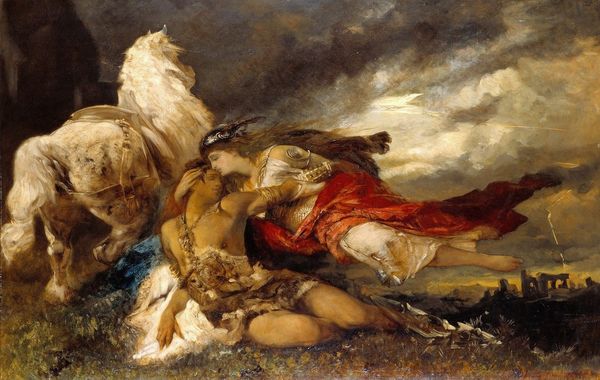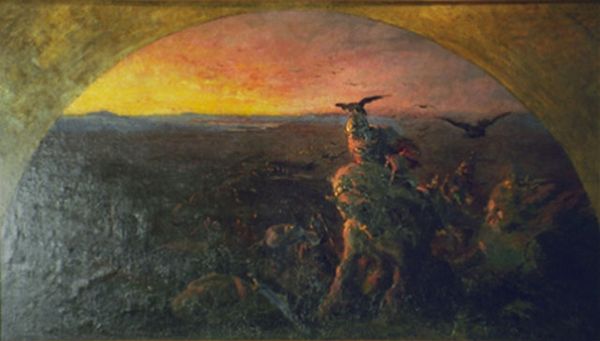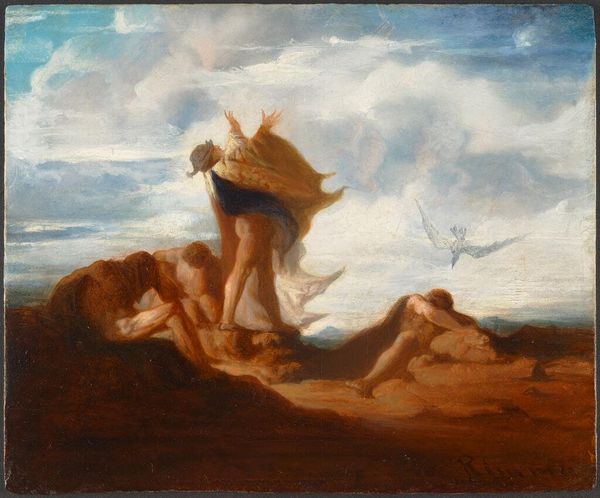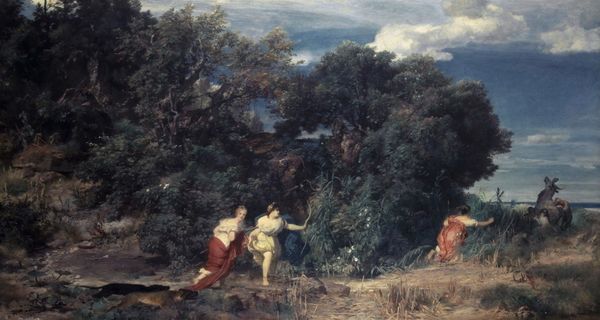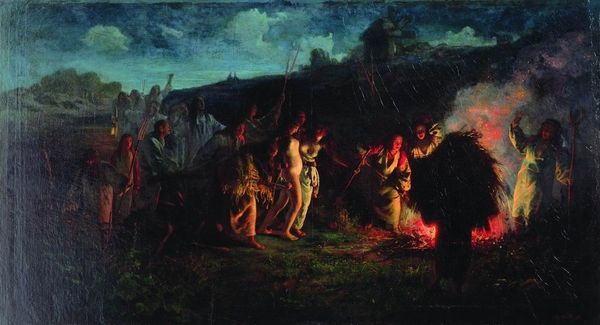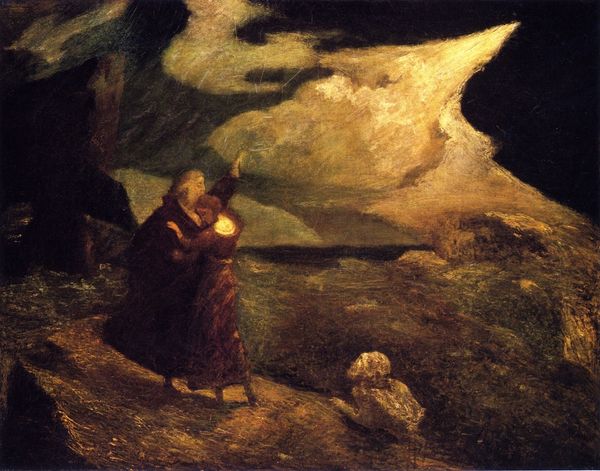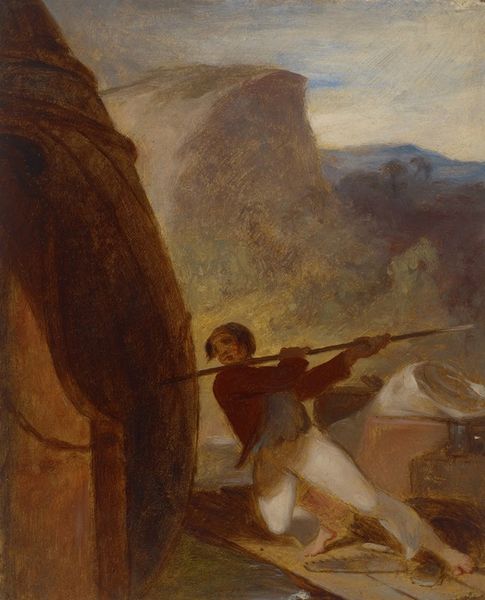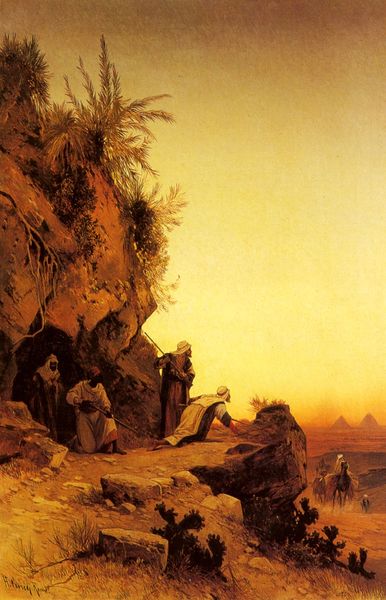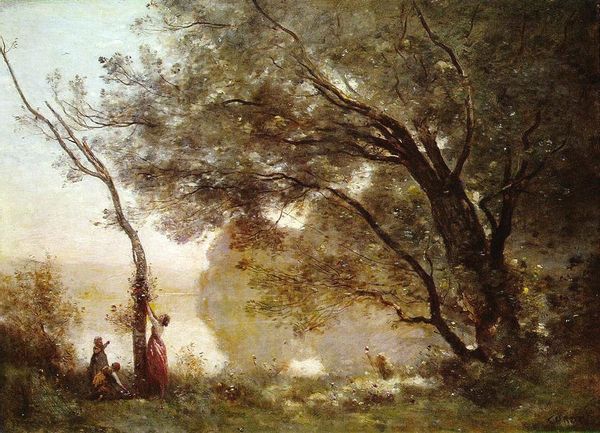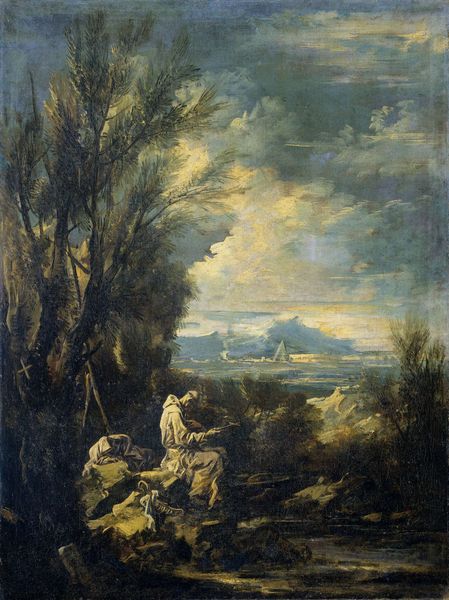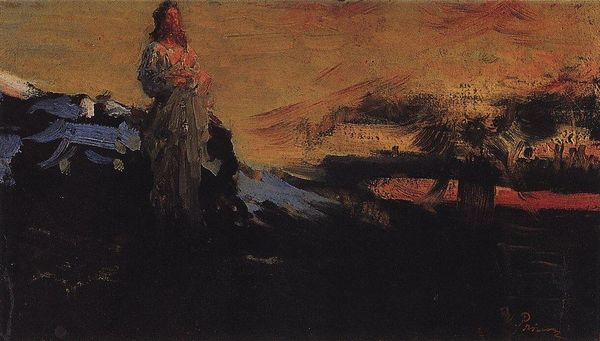
Copyright: Public domain
Curator: Let's consider Nikolai Ge's "Harbingers of the Resurrection," completed in 1867. It's a potent piece, rendered in oil, depicting figures shrouded in mystery under a dawn sky. What's your immediate reaction to it? Editor: It strikes me as incredibly somber, even unsettling. The darkness of the foreground is heavy, and the figures have this almost spectral quality. The dawn sky provides a faint contrast, yet doesn't dispel the feeling of foreboding. Curator: Precisely. Consider Ge's historical context; this piece emerges from a period of intense social and religious upheaval in Russia. The search for spiritual renewal, particularly among the intelligentsia, was deeply intertwined with questions of national identity and social justice. This painting reflects those concerns, challenging conventional interpretations of the resurrection narrative. Editor: The figure to the left, the one we presume to be Christ, is certainly unconventional. Clothed in flowing robes, facing away, it’s less a triumphant return and more an ethereal presence. This absence of traditional iconography is deliberate. Is he a symbol of hope, or loss? The artist's aim could be less about literal faith, and more about a renewed spirituality informed by symbolism. Curator: Indeed. Ge was influenced by thinkers like Alexander Herzen and Nikolai Chernyshevsky, advocating for social change and critiquing oppressive structures. Viewing Christ from behind, almost passively observed, destabilizes the typical power dynamic inherent in religious painting. He seems more a vulnerable harbinger, aligned with the downtrodden, a critical assessment of contemporary power dynamics. Editor: Then we must consider the guards; their dark forms and the wall's edge become symbols of that earthly power that overshadows the central figure. This placement reinforces the image of a world awaiting, not necessarily ready for, a message. The light that touches Christ does not seem to reach them, a sharp contrast between hope and a kind of willful blindness. Curator: Exactly, a blindness reflective of societal complacency in the face of injustice. Ge’s choice to represent Christ not in majesty but in quiet departure compels us to examine who benefits from maintaining the status quo. It implicates us in the continued struggle. Editor: So, in essence, this painting uses its visual language—shadow and light, figures moving in opposite directions, to provoke the observer’s deeper emotional, ethical reckoning. Curator: Precisely. It moves beyond the religious to the realm of social critique, encouraging us to actively seek, not passively receive, the harbingers of our own resurrections. Editor: Thank you for unveiling layers beneath the gloom. A piece seemingly steeped in shadows actually brims with potent ideas.
Comments
No comments
Be the first to comment and join the conversation on the ultimate creative platform.

